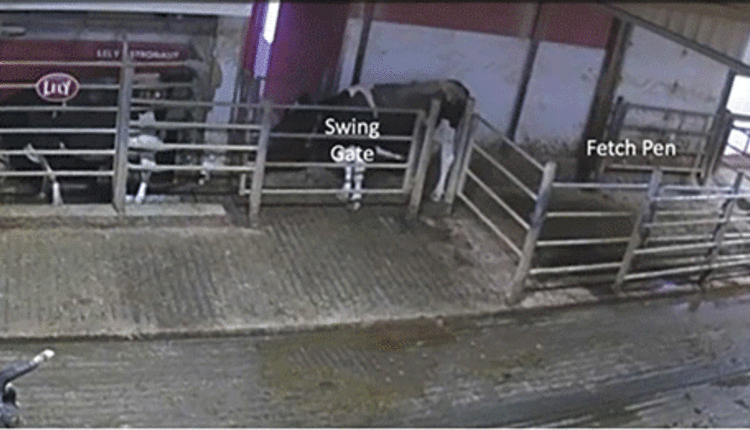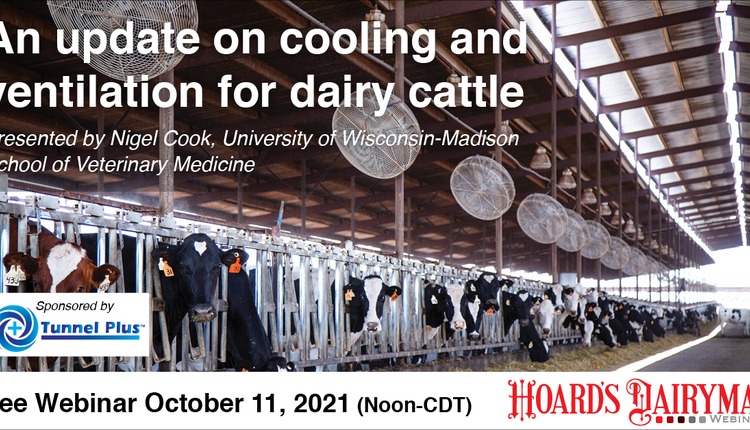The authors are with the University of Wisconsin-Madison School of Veterinary Medicine. Cook is a professor, and Strebe and Karlen are veterinary students.

A peculiar set of circumstances has led to the emergence of a new hoof lesion in growing heifers and adult dairy cattle.
Over the last decade, we have seen a reduction in lameness throughout the Upper Midwest. This came about due to a shift toward deep-bedded, comfortable freestalls using sand bedding, preventive hoof care, frequent footbathing, better flooring, and the prompt identification and treatment of lame cows. But in the very same herds where digital dermatitis, sole ulcers, and white line lesions have been tamed, a new lesion — corkscrew claw syndrome — has appeared.
This is not the corkscrew claw that we used to see affecting the rear lateral claws of older cows who were victims of poor housing and hoof care. It is also not the mild corkscrew of the front medial claw that we commonly recognize.
Rather, corkscrew claw syndrome is the combination of corkscrew deformities of the medial inside claws of both the front and rear feet, and it occurs in heifers predominantly, rather than cows. This is something different.
An irreversible impact
Experienced hoof trimmers have long noticed and reported the condition as more of a nuisance than a significant herd-level problem. They referred to it as “reverse corkscrew”because it affected the medial rather than the lateral claw. However, in recent years, lesion severity has noticeably worsened, and in some herds it presents as a significant issue causing costly early lactation heifer losses.
The most severely affected heifers present with severe corkscrew deformity of the medial front and rear claws. It can be so severe by the time the heifer calves that the rear medial claw is the dominant claw, taking the most weight. In fact, in some heifers, the lateral claw can be so underdeveloped that it is not weight bearing at all. This poses the animal significant challenges as it begins to milk and has to walk to and from the parlor.
Hoof wear is excessive because only one claw on each foot is weight bearing, and the sole becomes thin. These cows will walk with a wide-legged stance, and some may develop lesions in the toe as the corium becomes exposed.
If an inexperienced hoof trimmer is asked to trim these animals, they can make things worse. In traditional trimming, we are taught to trim the rear medial claw first and balance the lateral claw to match the medial claw. If the trimmer attempts to do this in such an animal, they will undoubtedly remove too much sole horn and elevate the risk for exposure of the corium. In the worst case, the heifer has to be culled.
Hoof trimmers can be trained to trim these animals effectively — by basically reversing what they were taught to do. However, we also know that the anatomical changes that result in this condition are permanent and unrepairable.
We can trim to keep the cow free of lameness and in the herd, but we cannot fix the corkscrew. The pedal bones are irreversibly changed, developing bony exostoses (bumps) and becoming narrower and more twisted.
The bony changes are painful, so you may see heifers cross their rear feet when standing idle to unload the medial claws. They may also shift weight forward, leading to noticeable separation of the medial and lateral claws of the front feet as the animal stands.
A perfect storm of factors
In 2017, Karl Burgi and Travis Busman from the Dairyland Hoofcare Institute and Roger Olson from Zinpro Corporation helped us identify herds with expected high and low prevalence of corkscrew claw syndrome. We visited 43 herds and scored the rear medial claws of heifers and mature cows for the lesion.
We found an overall prevalence across herds of 16 percent in heifers and 33 percent in mature cows. Data from breeding, pregnant, and prefresh heifers showed that prevalence rose with age, from 13 percent to 18 percent to 23 percent between these groups. With nearly one quarter of prefresh heifers affected in these herds, we clearly have a problem!
Why are we seeing this condition now?
The theory for the development of the condition is that it forms when heifers are pushing against the feedbunk while eating at a time when the bony skeleton of the limb is developing. This puts abnormal forces on the bones, creating the corkscrew deformity.
The risk factors we identified for the condition in our survey support this theory. We found greater risk for corkscrew claw syndrome in freestall-housed herds, rather than herds using bedded packs. The use of headlocks at the feedbunk, grooved concrete flooring, and abrasive sand bedding contribute to the condition, by providing greater grip and allowing the heifer to exert greater force on the limbs as they reach for feed. There may also be some effect of hoof horn growth and wear rates that may also be significant.
The very combination of housing solutions that have helped us resolve lameness issues in mature cows — sand-bedded freestalls, headlocks at the feedbunk, and grooved flooring — appear to be risk factors for the condition when used to house heifers. However, that does not explain why the prevalence of the condition has risen recently.
When we add in improved fertility programs, the use of sexed semen, the subsequent overstocking of our rearing facilities, and the use of limit feeding, we have developed the perfect storm of risk factors to see the emergence of this condition.
Do what’s best for heifers
What can we do?
An experienced hoof trimmer can help correct the feet to a point where the majority of animals will not be lame, but we have to rethink the way we are rearing our heifers in the Upper Midwest. Our advice at the moment involves:
- Re-evaluate your heifer supply needs and start implementing the use of beef bull se-men in the main herd.
- Reduce stocking levels to meet the needs of your target replacement rate.
- Use bedded packs if possible rather than freestalls up to breeding age.
- Use deep-bedded manure solids (target 50 percent moisture) mixed with 5 to 10 percent sand to bed the stalls.
- Limit the use of headlocks in heifer pens and use slant bars and post and rail bunks where possible. Ultimately, we may have to handle our heifers differently — in a chute rather than in a head lock.
- Cover aggressively grooved concrete floors with rubber. We cannot continue to use the grooving patterns that we recommend for adult cows in heifer pens. The grooves may need to be smaller and closer together to give the heifer just enough, but not too much, traction.
- Use straw to extend the ration, and keep the bunks filled and pushed up to reduce competition.
With this approach, we hope we can reverse some of the problems before they become too severe. Our findings suggest that what is good for the mature cow is not necessarily good for the growing heifer!










